IT4Innovations is a research and development centre with strong international links, it is involved in all activities of EuroHPC Joint Undertaking and in a number of prestigious international organisations (PRACE, ETP4HPC, EUDAT, BDVA, EOSC).
IT4Innovations is currently a National Centre of Competence for HPC, a member of the MaX and Space Centres of Excellence and a partner in more than 10 other international projects of Horizon 2020, Horizon Europe or Digital Europe, coordinating the EXA4MIND project. It also collaborates on the European Space Agency (ESA) project called AIOPEN (Platform Extensions with AI Capabilities).
The implementation of national projects financially supported by the Ministry of Education, Youth and Sports, the Ministry of Industry and Trade, the Ministry of the Interior, the Grant Agency of the Czech Republic or the Technology Agency of the Czech Republic is also important. Some of the projects are carried out in the form of contract research with commercial entities.
TOP 5 IT4INnovations PROJEcTs

2023–2026
Project ID: LM2023054
Provider: Large Infrastructures for Research, Experimental Development and Innovation project
e-INFRA CZ is a unique e-infrastructure for research, development, and innovationin the Czech Republic, which represents a fully transparent environment providing complex capacities and resources for scientific data transfer, storage, and processing to all entities focused on research, development, and innovation across sectors.
It creates a communication, information, storage, and computing platform for research, development, and innovation both at the national and international levels. It also provides an extensive and comprehensive portfolio of ICT services for conducting modern research, development and innovation.
The main components of e-INFRA CZ include:
→ high-performance national communication infrastructure,
→ national grid and cloud infrastructure,
→ the most powerful and state-of-the-art supercomputing systems in the Czech Republic,
→ high-capacity data storage facilities.
Other tools and services, such as access control to ICT resources, tools to support remote cooperation, and tools to ensure secure communication and data protection, are also an essential part and an added value of this infrastructure, contributing to its efficient and diverse use.

EXA4MIND
EXtreme Analytics for MINing Data
2023–2025
Project ID: 101092944
EXA4MIND project will build an Extreme Data platform which brings together data storage systems and powerful computing infrastructures by implementing novel automated data management and effective data staging. The project is driven by four application cases from molecular dynamics, advanced driver assistance systems, smart agri-viticulture and health and social Big Data. The EXA4MIND proposes innovative solutions to complex everyday data-processing problems and addresses critical challenges like data analytics, Machine Learning and Artificial Intelligence at scale; effectively democratising access to and enabling connectivity across EU supercomputing centres.

LUMI AI Factory – Service Center
2025–2028
Project ID: 101234208
As AI technologies and methodologies continue to advance swiftly, Europe has been actively developing and strengthening the ecosystem of frameworks, environments, tools and services required to boost innovation. This comprehensive approach aims to harmonise AI strategies across the continent, addressing the technology’s challenges and opportunities while assessing its impact on public and private sectors and society at large. The LUMI AI Factory Service Center project is a part of the broader LUMI AI Factory ecosystem leveraging the current LUMI supercomputer but gearing up for the upcoming LUMI-AI system, and the related AI-optimised quantum experimental platform LUMI-IQ.

Center for Artificial Intelligence and Quantum Computing in System Brain Research
2024 – 2030
Project ID: 101136607
CLARA, the Center for Artificial Intelligence and Quantum Computing in System Brain Research, represents the interdisciplinary center of excellence focused on the next generation of artificial intelligence/machine learning applications and quantum-centric supercomputing tools to push the frontier of neurodegeneration research, particularly Alzheimer's disease. The CoE seeks deep field knowledge and processing of large-scale biological and clinical data that will enrich the collective understanding of these emerging technologies and solve real-world challenges, thus accelerating innovations and the future of computing for the benefit of society.

High-level specialized application support service in High-Performance Computing (HPC)
2024–2028
Project ID: 101139786
EuroHPC Joint Undertaking is deploying a European-wide High-performance Computing infrastructure comprising a number of supercomputers from small petascale to exascale systems. Nowadays, the Hosting Entities offer support services to users, mainly providing help desk support for day-to-day operational issues and problems. The EPICURE project aims to operate a high-performance computing application support service for European scientists and researchers. Application Support Teams will provide services aimed at application porting, optimisation and execution of key applications and organisation of specialised training events and workshops in the context of high-profile international HPC events. Finally, developing a single point of contact will allow European HPC users to retrieve information on the systems, their architectures, access mechanisms, and available support services.
MAterials design at the eXascale
2023–2026
Project ID: 101093374
Materials simulations have become one of the most intensive and fast-growing domains for high-performance computing worldwide, with a recognized European leadership in developing and innovating the ecosystem of quantum simulation codes. MAX project will target these lighthouse codes to address the challenges and leverage the opportunities arising from future exascale and post-exascale architectures, and to offer powerful paths to discovery and innovation serving both scientific and industrial applications.
OTHER IT4INNOVATIONS PROJECTS
2025–2029
Grant agreement number: 101177590
EuroHPC JU aims to strengthen European capacities in the field of supercomputers and quantum computers, creating a cutting-edge hybrid HPC-QC infrastructure for open research and development. The project brings together six entities that will host quantum computers, integrating them in a coordinated manner with EuroHPC supercomputers. The goal is to develop standard methods for integrating quantum computers with the HPC environment, to develop applications and test suites that verify HPC-QC integration on all systems, and to establish a joint technical support forum (TST). Global coordination between host entities will also promote the exchange of best practices in HPC-QC integration, with the aim of ultimately establishing common European standards.

Software for Efficient and Energy-Aware Supercomputers
2025–2029
Grant agreement number: 101177590
The SEANERGYS project will develop a next-generation software solution to improve the energy-efficient operation of EuroHPC supercomputers. By enhancing the way energy is monitored, managed, and used in supercomputing, the project will help strengthen Europe’s commitment to sustainability. SEANERGYS focuses on four main objectives: reducing the energy consumed by real-world workloads, improving resource utilization, increasing overall system throughput, and optimizing response times, leading to greater research and development output per unit of consumed energy.
IT4Innovations will actively work on developing a set of artificial intelligence models (“model zoo”) designed to predict HPC cluster behavior using data from data center monitoring. IT4I will also create photorealistic visualizations of monitoring data, job schedules, and predicted future system states. In addition, IT4I will focus on dynamic resource management to improve resource utilization and energy efficiency, developing the MERIC software suite to measure energy consumption and optimize CPU and GPU settings.

2025–2027
Project identifier: FY01010025
Provider: MIT CR (TWIST programme)
The project, based on a partnership of Activair s.r.o., IT4Innovations, and Charles University, aims to use artificial intelligence (AI) for advanced analysis of data from materiál surface measurements (thin films of epitaxial graphene and bone samples) using atomic force microscopy (AFM). AFM extracts extensive information about surface topography, as well as electrical, magnetic, or mechanical properties. Processing such a large amount of data is time-consuming and operator-dependent (including the human factor). The unique combination of AFM measurement data output with a high-performance computer cluster (supercomputer), where machine learning and AI automate data processing, will result in significant improvements and speed-ups in data analysis, leading to substantial financial savings. Data processing will include noise reduction, distortion correction, automatic classification of the observed phenomena, and anomaly detection.

2025–2028
Project ID: 01906/2025/RRC
Provider: The Moravian-Silesian Region, Vouchers for Universities programme – 1st Call
The aim of the project is to develop an adaptive quantum error correction system for solving optimisation tasks. It employs reinforcement learning, a cutting-edge artificial intelligence method that will enable quantum computers to independently design error-correcting codes tailored to specific tasks and noise conditions. Funded by the Moravian-Silesian Region’s Vouchers for Universities programme, the research focuses on the Ising model, which underpins many industrial and scientific problems. These problems can be addressed using quantum algorithms, particularly QAOA, but the results are often affected by noise. The reinforcement learning agent will generate topological quantum codes that minimise the impact of noise and adapt them to specific architectures, such as the VLQ superconducting computer of the LUMI-Q consortium installed at IT4Innovations.

Project ID: 09I02‑03‑V01‑00029
2025 – 2027
InnovAIte Slovakia seeks to build a dynamic and sustainable innovation ecosystem in the field of artificial intelligence (AI), effectively linking cutting-edge research with practical applications. The project emphasizes the development of AI solutions that are not only technologically advanced but also ethical, environmentally sustainable, and socially beneficial. The consortium brings together leading research centers, universities, and businesses from Slovakia, Germany, and the Czech Republic.
Key focus areas include the development of AI algorithms for improving building energy efficiency, enhancing traffic safety through video analytics, automating software development, driving digital transformation in the insurance sector, and validating functional prototypes.

2025–2027
Project ID: FW12010084
Provider: TA CR (TREND programme)
The aim of the BLOCK Technology a.s. and VSB-TUO project will be a prototype system based on advanced image analysis and 3D modelling of the production process in real time, which will significantly increase the safety and quality of drugs manufactured in the insulator and implement training and audit activities for the purpose of operator training. The subject of research and development will be the implementation and construction of an isolator chamber equipped with durable, powerful cameras either inside or on the outer chamber of the isolator. These cameras will monitor the internal arrangement of the isolator. The entire system will be controlled and monitored by newly developed software, which will include management and recording of technological procedures, and will be validable.

EuroHPC Virtual Training Academy
2025–2029
Project ID: 101196394
The EVITA project will enhance education in high-performance computing and artificial intelligence in Europe. It will create a competency framework based on professional profiles and a skills tree, which will subsequently lead to the development of modules and courses. Quality training will be ensured through open calls with cascading funding, and an online educational platform will be developed with certifications and educational materials for students, as well as tools for trainers. EVITA aims to create a connected community of students, educators, and industry experts equipped with top-notch knowledge and skills in HPC.

LUMI AI Factory – Service Center
2025–2028
Project ID: 101234208
As AI technologies and methodologies continue to advance swiftly, Europe has been actively developing and strengthening the ecosystem of frameworks, environments, tools and services required to boost innovation. This comprehensive approach aims to harmonise AI strategies across the continent, addressing the technology’s challenges and opportunities while assessing its impact on public and private sectors and society at large. The LUMI AI Factory Service Center project is a part of the broader LUMI AI Factory ecosystem leveraging the current LUMI supercomputer but gearing up for the upcoming LUMI-AI system, and the related AI-optimised quantum experimental platform LUMI-IQ.

Digital Autonomy for RISC-V in Europe (Specific Grant Agreement 1)
2025–2028
Project ID: 101202459
The project aims to strengthen Europe's digital autonomy in the fields of High-Performance Computing (HPC) and Artificial Intelligence. Its goal is to develop products for European supercomputers intended for both research and industry. It leverages the open RISC-V architecture, chiplet technology, and open-source software to design three specialized chiplets for HPC and AI. These modules will be integrated into high-performance European systems. The project includes parallel hardware and software development and will create a technical roadmap for future European post-exascale supercomputers.

Optimization of low-speed characteristics & performance of aircraft
2/2025 – 6/2026
Project ID: 101163317
Companies specializing in custom aircraft manufacturing, BRM Aero and Airmobis, have formed a partnership with IT4Innovations to focus on the shape and configuration of aircraft flaps in order to achieve maximum aerodynamics. By leveraging advanced technologies such as artificial intelligence, digital modelling, neural networks, and supercomputer-accelerated simulations, they aim to develop a methodology that enables the creation of an optimized aircraft design in a fraction of the time and cost. This approach will also help reduce the aircraft's weight and material usage, increase cruising speed, and lower fuel consumption.

A Hybrid Generative AI-model for Resolving Molecular Structures integrating sequence and Cryo-Electron Microscopy data
1/2025 – 10/2025
Project ID: 101163317
The project aims to develop a novel open-source AI model by incorporating cryo-EM data into the OpenFold model architecture. This collaboration is designed to enhance prediction accuracy and confidence of generated 3D protein models. PUXANO’s structural biology capabilities will allow for rapid model validation and the generation of a unique proprietary service platform coupled to an open-source AI model for protein model prediction.
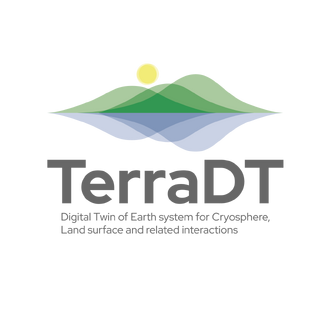
Digital Twin of Earth system for Cryosphere, Land surface and related interactions
2025–2028
Project ID: 101187992
TerraDT is a groundbreaking digital twin project designed to enhance our understanding of how glaciers, sea ice, vegetation, and aerosols influence the Earth’s climate. By delivering high-resolution climate impact assessments, it will provide concrete decision-making tools for local planning, such as helping determine optimal locations for shipping routes, parks, and other infrastructure. The project will leverage Europe's most advanced supercomputers to achieve unprecedented modelling accuracy.

2025 – 2028
Project ID: CZ.02.01.01/00/23_029/0008437
Grant Provider: Programme Johannes Amos Comenius (MEYS)
The project serves to ensure mandatory national co-financing of the complementary international project of the same name CLARA (Center for Artificial Intelligence and Quantum Computing in System Brain Research). This national part of the project will ensure the acquisition and operation of the computing and data infrastructure of the CLARA project and thus ensure the fulfilment of one of the objectives of the CLARA project - the construction of the Testbed. The CLARA Testbed is based on the creation of an HW and SW platform that provides computational and data facilities for research on neurodegenerative diseases, including the development of new AI models, protein simulations, and connections to quantum computing infrastructure. Specifically, the project will procure an HPCQC – AI computing cluster and corresponding data storage, including funding for the costs of their operation.

2024–2026
Project ID: FW10010202
Provider: TA CR (TREND programme)
The project aims to upgrade a range of vertical pumps with better hydraulic parameters, designed using hydraulic design know-how (SW) and new manufacturing processes (3D printing—WAAM welding technology). The project's R&D activities will be verified on a model pump. The project will focus on the overall upgrade of vertical pumps with respect to current market requirements.

2025 – 2028
Project ID: CZ.02.01.01/00/23_021/0008759
Provider: Programme Johannes Amos Comenius (MEYS)
The project focuses on research and development of software tools for analysing installation efficiency and resilience of new energy sources and storage capacities for use within energy communities and research in the field of hydrogen production, transport and storage. This includes social science research to promote acceptance of these specialised technologies by the general public, development of cooperation with the application sector, project preparation, infrastructure upgrade, and compliance with RIS3.

2024 – 2028
Project ID: CZ.02.01.01/00/23_014/0008787
Provider: Programme Johannes Amos Comenius (MEYS)
The project will create a National Repository Platform, a universal facility for efficient work with FAIR research data. The National Repository Platform is a secure system of technical and software resources that will provide sufficient capacity to store and make available the data produced by state-supported projects. On top of this base, a system of services, tools, and methodological procedures will be available for the creation and long-term management of repositories and data care in accordance with FAIR principles.
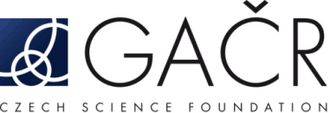
2025–2027
Project ID: 25-14529L
Provider: GACR
The aim of the project is to search for novel materials for magnetic refrigeration based on a large magneto- and barocaloric effects using the synergy of the theoretical ab-initio calculations and experimental materials-type studies. A special attention will be paid to the study of the thermal expansion in search of materials exhibiting negative thermal expansion (NTE) and magnetoelastic phase transition that may enhance the MCE/BCE due to the low thermal hysteresis, distinctive change of magnetic order and lattice parameters. The research will be conducted within international cooperation of experimental teams in PL and theoretical one from CZ.
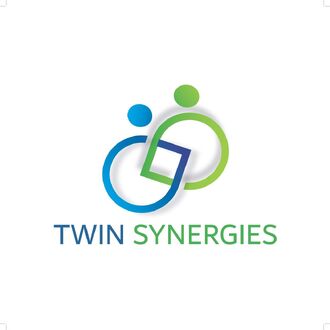
Empowering participation and accelerating synergies in Widening countries with a focus on Green & Digital Transition
2024–2026
Project ID: 101160135
There are significant differences in research and innovation (R&I) performance among EU member states, leading to varying participation levels in funding programs based on excellence. Low participation limits the ability of underperforming countries to improve their R&I systems. The TWIN SYNERGIES project aims to foster synergies at both operational and governance levels, focusing on human resources development and internationalisation. It will consider Smart Specialization Strategies, which are crucial for achieving smart growth at the EU level. TWIN SYNERGIES will develop tailored, transferable activities for capacity building, internationalisation, collaboration, and technology uptake, particularly in relation to the Green and Digital transitions. The project will also emphasise improving cooperation and communication among key stakeholders, including EU and national authorities.

Center for Artificial Intelligence and Quantum Computing in System Brain Research
2024 – 2030
Project ID: 101136607
CLARA, the Center for Artificial Intelligence and Quantum Computing in System Brain Research, represents the interdisciplinary center of excellence focused on the next generation of artificial intelligence/machine learning applications and quantum-centric supercomputing tools to push the frontier of neurodegeneration research, particularly Alzheimer's disease. The CoE seeks deep field knowledge and processing of large-scale biological and clinical data that will enrich the collective understanding of these emerging technologies and solve real-world challenges, thus accelerating innovations and the future of computing for the benefit of society.

2023–2026
Project identifier: CZ.02.01.01/00/23_016/0008329
Provider: MEYS CZ, Programme Johannes Amos Comenius
The aim of the project "Modernization of e-INFRA CZ II" is to modernize and upgrade specific components of the e-infrastructure – supercomputers and their facilities, MetaCentre computing clusters and immediately related storage capacities, new large data spaces for active work with data and increasing the capacity, quality and flexibility of the communication infrastructure (computer network CESNET3). This will provide the necessary ICT capacity in a form that will elevate IT infrastructure support to a level that covers the predicted requirements and needs of the user community across a broad spectrum of the research space, while matching the state-of-the-art level of the field.

2024–2026
Project identifier: CZ.01.01.01/01/22_002/0001028
Provider: MIT CR
Current commonly available imaging methods such as MRI and CT provide relatively simple visualisation of results and it is up to the specialist to evaluate what they see, usually based on black and white images only. It is his expertise that is required to understand the composition of the tissues. In this project, we will use artificial intelligence methods to automatically recognize different structures in tissues, such as a bloodstream, healthy organ tissue, a tumor, a mechanically damaged part of an organ, etc. At the same time, we will create visualization tools to present the results in virtual reality for teaching. Not only visualization techniques will be developed, but also haptic control with feedback and manipulation (controllability) of objects in virtual reality.

2024–2027
Project ID: 24-11388I
Provider: GACR
Material elastic properties are important for practical application. Nevertheless, for magnetic materials, high complexity emerges because of the coupling of magnetic and elastic properties. The postdoc project of Jakub Šebesta aims at the generalization of the spin-lattice dynamic approach beyond the scope of cubic materials. This model represents a highly efficient scheme to cover magnetoelastic behavior, such as magnetostriction or magnetoacoustic effects. However, the current approach applies only to simple structures. The generalization will allow one to study and explain magnetoelasticity in more complicated compounds and alloys, i.e. providing more useful materials with high application potential. Namely, the generalization of the magnetic terms in spin-lattice dynamic for tetragonal structures is suggested. Further, the derivation of sound wave propagation in lower symmetry is proposed. Finally, the influence of high-order correction in elastic and magnetoelasticity will be considered.

2023–2026
Project ID: CZ.01.01.01/01/22_002/0000436
Provider: MIT CR
The project, based on the cooperation between Apollo Data s.r.o. and IT4Innovations National Supercomputing Center at VSB-TUO, aims to combine the innovation of medical systems in the field of refractive cataract surgery and standard cataract surgery together with a mobile application for patients enabling elementary indication of vision disorders in the comfort of their home. It also aims to simplify the process of initiating treatment, supporting the treatment process that has already started with follow-up care and long-term monitoring of the condition. In particular, IT4 Innovations will provide research and development of complex algorithms for diagnosing eye disorders from acquired images.

A European Network of TRUSTed research environments
2024–2027
Project ID: 101131056
The project will create a European network of trusted research environments for sensitive data and drive interoperability through the joint development of a common blueprint for federated data access and analysis. EOSC-ENTRUST connects national centres, research organisations and scientific communities to implement, validate and promote their capabilities using shared standards and common language. The project has identified four driver projects covering genomics, clinical trials, social science, and public-private partnerships to benchmark capabilities, inform blueprint design and demonstrate secure data analysis using federated workflows.

Czech National Quantum Communication Infrastructure
2023–2026
Project ID: 101091684
The CZQCI is a project to build a test version of a national quantum communication backbone infrastructure that will be used to validate relevant technologies and their integration into existing telecommunication networks, as well as to disseminate the knowledge needed for its use in the field of secure communication. The project aims to create a test quantum backbone infrastructure connecting Prague, Brno and Ostrava. It will offer education in the field of quantum security of data transmission and possibility to test real quantum communication through a test connection to the test backbone network for interested partners from public administration and industry.
https://www.cybersecurityhub.cz/en/strategic-projects/czqci

2023–2026
Project ID: CZ.01.01.01/01/2 2_002/0000605
Provider: MIT CR
The project, submitted under the OPTAK (Technologies and Applications for Competitiveness) Operational Programme and the Applications call, builds on the successful, more than 10-year cooperation of ZEBR s.r.o., Palacký University in Olomouc, and VSB-TUO in developing an instrument for spectral analysis of substances using Raman optical activity (ROA) detection. IT4I will be involved in developing a spectrometer for the measurement of Terahertz optical activity and circular dichroism, in particular, the development of a polarisation-sensitive device for time-domain THz ellipsometry, a terahertz optical path, and a polarisation state modulator.

2023–2026
Project ID: 00734/2023/RRC
Provider: The Moravian-Silesian Region, the Global Experts Programme
The project brings together the expertise of carbon dot synthesis specialists who will focus on preparing dots with high quantum emission yields, particularly in the red and near-infrared, and on chiral carbon dots for sensing applications. These efforts will be supported by state-of-the-art materials characterization techniques to determine carbon dots' composition, structural properties, and electronic and ultrafast optical properties. This will be done in close collaboration with a theoretical computing group with expertise in complex structural models of a wide range of photoluminescent materials. The project serves as a means of transferring the know-how and bringing the expertise of Professor Andrey Rogach's group to the VŠB-TUO by importing their skills in materials and their characterisation and by creating a close collaboration between the teams involved.

Performance Optimisation and Productivity 3
2024–2026
Project ID: 101143931
The key element to ensure efficient use of HPC infrastructures is to optimise the performance and efficiency of the applications. The Centre of Excellence on performance optimisation and productivity (CoE POP) was initiated in October 2015 with the fundamental purpose of assisting a broad community of HPC application developers and users in science and industry domains. The current proposal of the POP3 project is articulated in 3 pillars: services, users and codesign. POP services mainly focus on performance assessments to evaluate code performance and scale, identifying the main sources of inefficiency or improving energy efficiency. POP3 will focus on the European flagship HPC applications for other CoEs. However, it will still provide services to prescribers and SMEs to promote an efficient usage of computing resources.

High-level specialized application support service in High-Performance Computing (HPC)
2024–2028
Project ID: 101139786
EuroHPC Joint Undertaking is deploying a European-wide High-performance Computing infrastructure comprising a number of supercomputers from small petascale to exascale systems. Nowadays, the Hosting Entities offer support services to users, mainly providing help desk support for day-to-day operational issues and problems. The EPICURE project aims to operate a high-performance computing application support service for European scientists and researchers. Application Support Teams will provide services aimed at application porting, optimisation and execution of key applications and organisation of specialised training events and workshops in the context of high-profile international HPC events. Finally, developing a single point of contact will allow European HPC users to retrieve information on the systems, their architectures, access mechanisms, and available support services.
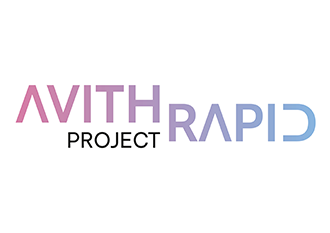
Antiviral Therapeutics for Rapid Response Against Pandemic Infectious Diseases
2024–2028
Project ID: 101137192
Project AVITHRAPID aims to support the search for novel broad-spectrum antiviral compounds by advancing multiple approaches. Building on a pre-existing set of bioactive small molecules, which are at least at the validated hit level, AVITHRAPID strives to develop pre-clinical candidates targeting several viruses. This will be achieved by combining the relevant expertise for pre-clinical drug discovery, including molecular modelling, biochemical and cell-based assays, X-ray crystallography, medicinal chemistry, biophysical binding studies, ADMETox profiling, in vitro and in vivo, as well as animal disease models. As a consequence of the activities in the AVITHRAPID project, an early-stage drug discovery pipeline will be established that can be used to rapidly identify and develop novel antiviral compounds against emerging diseases.

Foreseeing the next generation of Aircraft: hybrid approach using Lattice-boltzmann, experiments and modelling to optimize fluid/struCture interactiONs
2024–2027
Project ID: 101138305
Aviation transport is the second biggest source of greenhouse gas emissions after road transport. One of the main levers to decrease CO2 emissions is to reduce the airframe structural weight. The growing amount of air traffic means that many EU citizens are still exposed to high noise levels. FALCON’s ambition is to enhance the design capabilities of the European aircraft sector, focusing on fluid-structure interaction (FSI) phenomena to improve the aerodynamic performances of aircraft. Specifically, FALCON aims to develop high-performance, predictive and multi-disciplinary tools for FSI in aeronautics in order to reduce the aeroacoustics and aeroelastic instabilities using multi-fidelity optimisation. To achieve its ambitious goal, FALCON assembles a unique interdisciplinary environment of fifteen public and private institutions and their affiliated entities from renowned research institutions to SMEs and suppliers.
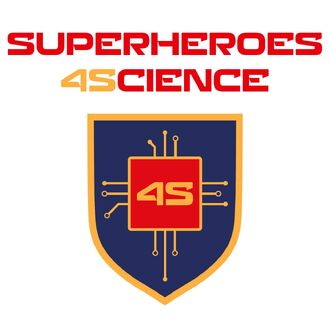
2023–2025
Project ID: 22320170
Provider: The International Visegrad Fund
Superheroes 4 Science project plans to introduce the young generation to High-performance computing (HPC), a critical field of technology that utilises supercomputers to solve complex problems and perform computationally intensive tasks. The project aims to create various interactive educational materials on HPC and its two related emerging fields: Artificial Intelligence and Quantum Computing. The project is co-financed by the Governments of Czechia, Hungary, Poland and Slovakia through Visegrad Grants from the International Visegrad Fund.

Integration of biodiversity monitoring data into the Digital Twin Ocean
2023–2027
Project ID: 101112823
The primary objective of the DTO-BioFlow project is to awaken sleeping biodiversity data, enabling a smooth integration of both existing and new data into the Digital Twin Ocean. The project aims to provide innovative and sustainable solutions for making previously unavailable or hard-to-access biodiversity data accessible. Additionally, it will pilot cost-effective and scalable technologies for monitoring species on a large scale. DTO BioFlow wants to improve the European biodiversity data environment by streamlining the flow of FAIR data from various sources into digital twin repositories, optimising and enhancing the functionality and societal value of DTO.

2023–2028
Project ID: CZ.02.01.01/00/22_004/0007682
Provider: Programme Johannes Amos Comenius
The European Open Science Cloud (EOSC) is a European initiative focused on developing infrastructures supporting open science practices in research data management. It offers facilities for storing and sharing so-called FAIR research data – findable, accessible, interoperable, and reusable. The EOSC-CZ project is the implementation of the EOSC initiative in the Czech Republic, which aims to create a national node of this European initiative and promote good practice in research data management across scientific communities. Implementing National Data Infrastructures will create a common platform for sharing, managing, and accessing data and computing resources for research purposes. The NDI will support scientific and multidisciplinary research activities and include various scientific fields and disciplines.
More information here.
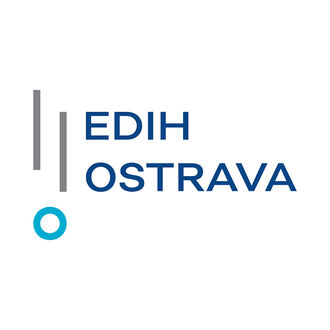
2023–2025
Project ID: 101083551
The EDIH Ostrava is part of a European network of digital innovation hubs that support the deployment and use of digital technologies, primarily in small and medium-sized companies, to support their competitiveness. The added value of the existence of the network of European digital innovation hubs lies in the sharing of experience and mutual cooperation in the implementation of specific activities as well as in mediating and linking demand (client needs) with supply (hub expertise and technology) across the EU, taking into account the different specialisations of the individual European hubs.

MAterials design at the eXascale
2023–2026
Project ID 101093374
Materials simulations have become one of the most intensive and fast-growing domains for high-performance computing worldwide, with a recognized European leadership in developing and innovating the ecosystem of quantum simulation codes. MAX project will target these lighthouse codes to address the challenges and leverage the opportunities arising from future exascale and post-exascale architectures, and to offer powerful paths to discovery and innovation serving both scientific and industrial applications.

Scalable Parallel and distributed Astrophysical Codes for Exascale
2023–2026
Project ID: 101093441
In Astrophysics and Cosmology, High-Performance Computing-based numerical simulations are outstanding instruments for scientific discovery. They represent essential tools and theoretical laboratories able to understand physical processes behind the observed sky for which the effective exploitation of exascale computing capabilities is essential. Exascale systems have an unprecedented architectural complexity with a significant impact on simulation codes. The SPACE Centre of Excellence aims to extensively re-engineer target codes to engage with new computational solutions and adopt innovative programming paradigms, software solutions, and HPC libraries.

EXtreme Analytics for MINing Data
2023–2026
Project ID: 101092944
EXA4MIND project will build an Extreme Data platform which brings together data storage systems and powerful computing infrastructures by implementing novel automated data management and effective data staging. The project is driven by four application cases from molecular dynamics, advanced driver assistance systems, smart agri-viticulture and health and social Big Data. The EXA4MIND proposes innovative solutions to complex everyday data-processing problems and addresses critical challenges like data analytics, Machine Learning and Artificial Intelligence at scale; effectively democratising access to and enabling connectivity across EU supercomputing centres.
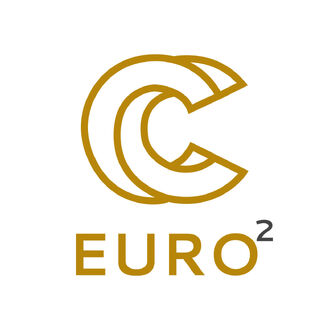
National Competence Centres in the framework of EuroHPC / Phase 2
2023–2026
Project ID: 101101903
The mission of EuroCC 2 is to continue the establishment of a network of National Competence Centres (NCC) in the most efficient way while continuing to address the differences in the maturity of HPC deployment in Europe. The main task of the overall activity is to support national centres in setting up their operational frameworks while accessing and making the most of the experience and expertise currently available at national and European levels. The main goal is to drive collaboration and exchange of best practices and knowledge at the European level and to accelerate the improvement of national and, thus, European capabilities.

2023–2025
Project ID: LM2023054
e-INFRA CZ is a unique e-infrastructure for research, development, and innovation in the Czech Republic, which represents a fully transparent environment providing complex capacities and resources for scientific data transfer, storage, and processing to all entities focused on research, development, and innovation across sectors. It creates a communication, information, storage, and computing platform for research, development, and innovation both at the national and international levels. It also provides an extensive and comprehensive portfolio of ICT services for conducting modern research, development and innovation.
The main components of e-INFRA CZ include:
→ high-performance national communication infrastructure,
→ national grid and cloud infrastructure,
→ most powerful and state-of-the-art supercomputing systems in the Czech Republic,
→ high-capacity data storage facilities.
Other tools and services, such as access control to ICT resources, tools to support remote cooperation, and tools to ensure secure communication and data protection, are also an essential part and an added value of this infrastructure, contributing to its efficient and diverse use.
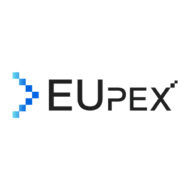
European Pilot for Exascale
2022–2026
Project ID: 101033975 (H2020-JTI-EuroHPC-2020-01, RIA)
The EUPEX consortium aims to design, build, and validate the first EU platform for HPC, covering end-to-end the spectrum of required technologies with European assets: from the architecture, processor, system software, and development tools to the applications. The EUPEX prototype will be designed to be open, scalable, and flexible, including the modular OpenSequana-compliant platform and the corresponding HPC software ecosystem for the Modular Supercomputing Architecture. Scientifically, EUPEX is a vehicle to prepare HPC, AI, and Big Data processing communities for upcoming European Exascale systems and technologies.

2022–2025
Project ID: LUASK22099
Provider: International cooperation in R&D&I
Two-dimensional materials provide a novel building platform for nanotechnology and functional nanodevices. The functional nanodevices, i.e., nano-sized devices, are expected to enter 21st-century modern society. One of them is a non-volatile magnetic memory element controlled by electrical current only involving anomalous effects (e.g., the anomalous Hall effect) due to spin-orbit coupling interaction in materials or on their interfaces. The project builds on the assumption that such an element contains a magnetic part for storing the information and a non-magnetic part with strong spin-orbit coupling, which allows the spin-orbit torque to control the magnetisation dynamics, i.e., reading and writing information. A key question addressed within this project is how the Joule heat produced due to the flow of current in such a nanodevice affects the spin-orbit torque. The project aims at exploring and explaining the proximity and temperature effects on spin-orbit torque in devices made of 2D materials forming van der Waals heterostructures. The experience and computational procedures of both partners (VSB-TUO and Pavol Jozef Šafárik University in Košice) will be applied to determine the thermoe-lectric phenomena and the influence of interfaces for experimentally relevant 2D spin-orbit torque systems.

Piloting a Cooperative Open Web Search Infrastructure to Support Europe’s Digital Sovereignty
2022–2026
Project ID: 101070014 (HORIZON-CL4-2021-HUMAN-01, RIA)
In the OpenWebSearch.EU project, 14 renowned European research and supercomputing centres joined forces to develop an open European infrastructure for web search. This project will contribute to Europe’s digital sovereignty and promote an open, human-centred search engine market. Within three years, the researchers will develop the core of a European Open Web Index as a basis for a new Internet Search in Europe. In addition, the project will set the foundation for an open and extensible European Open Web Search and Analysis Infrastructure based on Europe’s values, principles, legislation, and standards.

Biodiversity Digital Twin for Advanced Modelling, Simulation and Prediction Capabilities
2022–2025
Project ID: 101057437 (HORIZON-INFRA-2021-TECH-01, RIA)
BioDT aims to push the current boundaries of a predictive understanding of biodiversity dynamics by developing a Digital Twin providing advanced modelling, simulation, and prediction capabilities. By exploiting existing technologies and data available across relevant research infrastructures in new ways, the BioDT project will be able to model the interaction between species and their environment accurately. Scientists at Research Infrastructures will be able to use the BioDT to 1) better observe changes in biodiversity, 2) relate these changes to possible causes, and 3) better predict the effects of changes based on influences on these causes by either climate or human intervention. The consortium brings together a dynamic team of experts in biodiversity, high-performance computing, and artificial intelligence.

2022–2025
Project ID: 22-35410K
Provider: GACR
Permanent magnets are a key technology for modern society with applications in air conditioning, mobility, and power generation. In state-of-the-art permanent magnets, the atomic-scale defects, like in the grain boundary phase, have the most significant effects on the macroscopic properties (e.g., coercivity). In this project, a quantitative theory of coercivity, in terms of the local atomic structure, the spatial variation of the intrinsic magnetic properties, and the physical micro-structure of the magnet will be studied. To achieve this goal, a unique scheme of simulation procedures will be developed between quantum mechanical calculations, atomic spin dynamics, and micromagnetic continuum simulations. Magnetic properties will, therefore, be newly taken into account on the atomic scale, i.e., with the inclusion of atomic interface defects and grain boundaries. This will avoid the use of former assumptions in the use of magnetic properties from solid phases. This will allow a multi-scale model to be built to determine the magnetic properties of real materials.

2022–2024
Project ID: 22-22322S
Provider: GACR
The recently discovered superconductivity in the nearly magnetic compound UTe2 boosted interest in unconventional superconductors. The results published so far indicate multiple superconducting phases and magnetic ordering induced by applying an external magnetic field and/or hydrostatic pressure. The revealed analogies of the behaviour of UTe2 with the properties of ferromagnetic superconductors URhGe, UCoGe and UGe2 may help develop a unified theory of unconventional superconductivity. The project will bring together experimentalists (Charles University) and theorists (VSB-TUO) to collaborate intensively in a comprehensive investigation of a complex phase diagram of UTe2 and related compounds employing a yet unseen combination of experimental measurements and state-of-the-art theoretical ab initio calculations of thermal expansion, magnetostriction, heat capacity, magnetisation, elastic constants, and electrical transport of unconventional superconductors under multi extreme conditions.

European Master for High Performance Computing
2022–2026
Project ID: 101051997 (H2020-JTI-EuroHPC-2020-03, CSA)
The consortium, led by the University of Luxembourg, includes universities, research and supercomputing centres, industrial partners, and other cooperating institutions. The consortium aims to launch master’s degree programmes at eight European universities: the University of Luxembourg, Universitat Politècnica de Catalunya, Politecnico di Milano, Friedrich-Alexander-Universität Erlangen-Nürnberg, Sorbonne Université, Sofia University St. Kliment Ohridski, Università della Svizzera Italiana, and Kungliga Tekniska Hoegskolan. It is envisaged that the list of participating universities and institutions will be expanded in the future. This activity is part of the broader EuroHPC Joint Undertaking strategy to support the development of key competencies and education and training in HPC for the needs of European science and industry.
HPC big dAta artifiCial intelligence cross stack platfoRm tOwardS exaScale
2021–2024
Project ID: 955648 (H2020-JTI-EuroHPC-2019-1, EuroHPC-IA)
The project aims to co-design and develop an HPC, BD, and Artificial Intelligence (AI) convergent platform, supporting applications in the Aeronautics, Climate and Weather, and Energy domains. To this end, the project will leverage the next generation of pre-exascale infrastructures, still ready for exascale systems and effective mechanisms to easily describe and manage complex workflows in the three domains mentioned. The project combines traditional HPC techniques with AI (specifically machine learning/deep learning) and BD analytic techniques to enhance the application test case outcomes.

SCAlable LAttice Boltzmann Leaps to Exascale
2021–2023
Project ID: 956000 (H2020-JTI-EuroHPC-2019-1, EuroHPC-IA)
The project brings together eminent industrial and academic partners to improve the performance, scalability, and energy efficiency of industrial Lattice Boltzmann methods-based computational fluid dynamics (CFD) software. The Lattice Boltzmann method (LBM) provides a reliable alternative to conventional CFD approaches. LBM is exceptionally well suited to exploit advanced supercomputer architectures as it enables massive parallelisation. The project will directly benefit European industry while contributing to fundamental research.
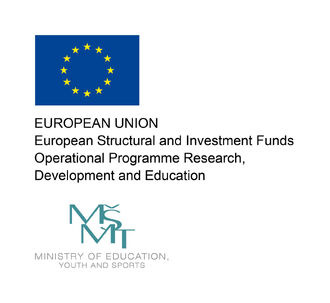
2021–2023
Project ID: DGS/TEAM/2020-033
Provider: Operational Programme Research, Development, and Education
The proposed project aims to develop computational procedures to solve non- linear structural dynamical problems. Moreover, the procedures will be applied to computational models of rotating machinery, discretised by three-dimensional finite elements, to analyse their vibrations. Within the scope of this project, investigators will develop procedures for (i) steady-state response determination utilising the Harmonic Balance Method (HBM), ii) determination of the amplitude-frequency response curve by the continuation technique, iii) the stability and essential bifurcation analysis of the steady-state response, iv) the identification of an optimal strategy for the amplitude-frequency response curve determination by the application of Total Finite Element Tearing and Interconnecting (T-FETI) on a linearised model, including the application of suitable preconditioners and coarse space projectors, and, v) the determination of the transient response of the model, based on corotational finite element formulation utilising time-integration. The procedures will be created and studied on the test cases in the MATLAB software and subsequently implemented in ESPRESO (ExaScale PaRallel FETI SOlver) developed as an open-source code project at IT4Innovations and tested on real industrial cases.

Data Infrastructure Capacity for EOSC
2021–2023
Project ID: 101017207 (H2020-INFRAEOSC-2018-2020, RIA)
The project consortium brings together a network of computing and data centres, research infrastructures, and data repositories to enable a European storage and data management infrastructure for EOSC, providing generic services and building blocks to store, find, access, and process data consistently and persistently.

IO Software for Exascale Architecture
2021–2024
Project ID: 955811 (H2020-JTI-EuroHPC-2019-1, EuroHPC-RIA)
IO-SEA aims to provide a novel data management and storage platform for exa-scale computing based on hierarchical storage management (HSM) and on-demand provisioning of storage services. The platform will efficiently use storage tiers spanning NVMe and NVRAM at the top all the way down to tape-based technologies. Advanced IO instrumentation and monitoring features will be developer within the project, leveraging the latest AI and machine learning advancements to systematically analyse the telemetry records and make smart decisions on data placement.
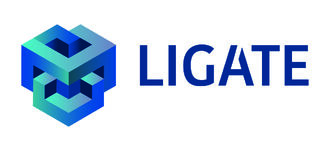
LIgand Generator and portable drug Discovery platform AT Exascale
2021–2024
Project ID: 956137 (H2020-JTI-EuroHPC-2019-1, EuroHPC-IA)
The project aims to integrate and co-design best-in-class European open-source components together with proprietary IPs to keep worldwide leadership on Computer-Aided Drug Design (CADD) solutions exploiting today’s high-end supercomputers and tomorrow’s Exascale resources, fostering European competitiveness in this field. The proposed LIGATE solution, in a fully integrated workflow, enables to deliver the result of a drug design campaign with the highest speed and accuracy; further implementation of auto-tuning the parameters of the solutions to meet the time and resource constraints.

2021–2023
Project ID: CZ.01.1.02/0.0/0.0/20_321/0024953
Provider: the Operational Programme Enterprise and Innovation for Competitiveness
The aim of the joint industrial research project of Optaglio a.s. and VSB-TUO is to develop new products in the field of security holography that will be competitive on global markets. These are entirely new types of anti-counterfeiting features. In the framework of the presented project, we will focus on two original approaches to security holography, combining a high technical production level and advanced nanostructure design methods.
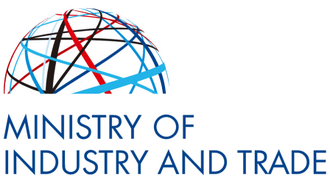
2021–2022
Project ID: CZ.01.1.02/0.0/0.0/20_321/0024308
Grant Provider: MIT CR
The project focused on the research and development of a new generation of modular control units for advanced aviation electromechanical actuators, which will find use in the next generation of aviation platforms known as More Electric Aircraft (MEA) and in the next generations of Full Electric Aircraft (FEA). These should contribute to making air transport more environmentally friendly by significantly increasing the use of electricity, which entails several changes, including a switch to a substantially higher voltage on-board network.

2021–2022
Project ID: DGS/TEAM/2020-020
Provider: Operational Programme Research, Development, and Education
The project represented a part of a broader research outlook, in collaboration with Université Toulouse III – Paul Sabatier (UPS), focused on investigating low-temperature rare-gas-based plasma for (most importantly) biomedical applications. It covered two double-degree dissertation theses (those of Beseda and Fresnelle) and two other theses (of Horáčková and Paláček). The project focused on modelling plasma interactions with air as the first step towards understanding the interactions between plasma active species with biomedical substrates. This project followed the previous research efforts (one co-supervised thesis, one double-degree thesis, and approximately eleven published papers).
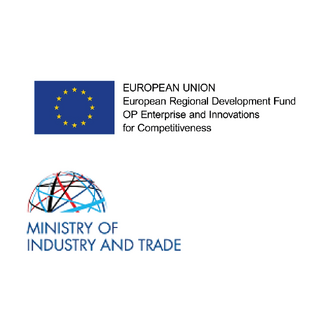
2021–2023
Project ID: CZ.01.1.02/0.0/0.0/21_374/0026707
Provider: Projects of the Operational Programme Enterprise and Innovation for Competitiveness
The project aims to create SW for the effective evaluation of catalytic processes and for comprehensive support in designing SCR technologies for industrial applications. The research and development activities solve the overall DeNOx process by reducing nitrogen oxides from the exhaust gases when reacting with gaseous NH3. The SW will be based on machine learning algorithms and flow calculations (CFD). The SW has a direct commercial application in nitrogen emission reduction solutions in power plants in both the Czech Republic and abroad.

2021–2023
Project ID: DGS/TEAM/2020-008
Provider: Operational Programme Research, Development, and Education
There is an ever-increasing need to visualise data from large computations on HPC systems. Monitoring such systems during their runtime and visualising this information properly is essential. To explore the data more intuitively, it is desirable to use 3D visualisations. For this purpose, we aim to create open-source tools that will allow data to be processed and visualised in high quality and support its presentation in virtual reality (VR). The developed tools will specifically focus on medical data visualisation, HPC cluster runtime monitoring, and the visualisation of simulation results from parallel open-source simulation tools. High-quality visualisations in VR are the primary goal of the project. Another goal is to strengthen cooperation among researchers with different specialisations.
The project will also enable and visualise resource consumption monitoring of IT4Innovations and their visualisation. This feature, which will be greatly appreciated by both administrators and users of these systems, will allow for follow-up research based on the data collected, such as research into energy-aware job scheduling.

2021–2023
Project ID: CZ.01.1.02/0.0/0.0/20_321/0024896
Provider: Projects of the Operational Programme Enterprise and Innovation for Competitiveness
The project goal is to create a SmartFleet platform, which should enable optimisation of company car fleets in terms of their composition and utilisation to maximise the share of cars that use alternative fuels (especially electric cars). The solution will be developed as interdisciplinary and open, which allows flexibility in terms of new inputs (e.g., location of hydrogen stations in the future) and enables iteration when considering modification of the car fleet and solving complete car fleet lifecycles.

2021–2023
Project ID: DGS/TEAM/2020-027
Provider: Operational Programme Research, Development, and Education
The terahertz (THz) spectral range holds immense potential for medical, security, and telecommunications applications. Therefore, it is desirable to develop new sources of terahertz waves with fast response, intense signal, controlled polarisation properties, and easy implementation. In this project, terahertz sources using spintronic phenomena such as terahertz spintronic emitters based on the spin-Hall effect and spin-laser-based THz sources will be designed, developed, and characterised. Photonic and plasmonic structures will be employed to enhance the performance of these devices, including Bragg grating and plasmonic materials for spintronic emitters and anisotropic 2D grating for spin lasers. Nonconventional characterisation methods will be used to describe spin mobility and broadband optical properties, including terahertz plasma-based time-domain spectroscopy and pump-probe terahertz measurements. Numerical simulations of ultrafast dynamics and spin transport will allow a deeper understanding of spin-based generation processes. The project is highly interdisciplinary, including approaches and methods from optics, magnetism, engineering, advanced nanotechnology, high-performance computing modelling, and applied quantum theory.

2021–2023
Project ID: TL05000184
Provider: TA CR (ÉTA programme)
The project aims to create a comprehensive research report and software for the needs of the Ministry of Labour and Social Affairs based on an in-depth and comprehensive analysis of the position of Czech households according to the type of household, the number of children, and the absolute and relative income in the context of the tax-benefit system. The outputs of the in-depth analysis will serve as essential material for creating a model of the tax-benefit system implemented in software, of which the primary purpose will be to monitor and empirically evaluate the impact of legislative changes in current Czech family policy in the tax-benefit system on the socio-economic status of particular households and numbers of children.

2021–2023
Project ID: CZ.01.1.02/0.0/0.0/ 20_321/0024591
Provider: Projects of the Operational Programme Enterprise and Innovation for Competitiveness
The project aims to conduct research and development activities in the area of cloud and printing solutions. The project will be implemented in effective collaboration of Y Soft Print Management Solutions, a.s., with VSB-TUO and the Czech Technical University in Prague.

2020–2023
Project number: CZ.02.1.01/0.0/0.0/18_072/0015659
Provider: Operational Programme Research, Development and Education Project
The project aims to modernise and further develop the capacity of all e-infrastructure components so that the level of IT infrastructure support corresponds to the predicted requirements of the user community for the given period and simultaneously to the state-of-the-art level of the field. The project focuses primarily on the complete upgrade of all layers of the standard communication infrastructure and the upgrade of elements of the universal e-infrastructure capabilities for data storage and processing. An integral part of the solution will then be the optimal technological and logical interconnection of these upgraded capacities with analogous units in the European (GÉANT, EGI, EOSC, EuroHPC, ETP4HPC, EUDAT, PRACE, etc.) and global (GLIF) R&D area and, of course, with related infrastructures and entities at the national level.

Project ID: LM2018140
Provider: Large Infrastructures for Research, Experimental Development and Innovation project
e-INFRA CZ is a unique e-infrastructure for research, development, and innovation in the Czech Republic, which represents a fully transparent environment providing complex capacities and resources for scientific data transfer, storage, and processing to all entities focused on research, development, and innovation across sectors. It creates a communication, information, storage, and computing platform for research, development, and innovation both at the national and international levels. It also provides an extensive and comprehensive portfolio of ICT services for conducting modern research, development and innovation.
The main components of e-INFRA CZ include:
→ high-performance national communication infrastructure,
→ national grid and cloud infrastructure,
→ most powerful and state-of-the-art supercomputing systems in the Czech Republic,
→ high-capacity data storage facilities.
Other tools and services, such as access control to ICT resources, tools to support remote cooperation, and tools to ensure secure communication and data protection, are also an essential part and an added value of this infrastructure, contributing to its efficient and diverse use.

2020–2022
Project ID: 08183 2019 RRC (S516/20-96100-01RN)
Provider: The Moravian-Silesian Region
Financial support from the Moravian-Silesian Region was dedicated to the provision of discounted services related to the use of the IT4Innovations computational resources. This support was intended for small and medium-sized enterprises with a registered office or branch in the Moravian-Silesian Region and was provided under a de minimis regime. This support enabled progressive small and medium-sized enterprises, including start-ups, to use supercomputing technologies and expertise to develop their business activities.

2020–2022
Project ID: 8X20050
Provider: Researcher Mobility Support within international cooperation in R&D&I
The research was a complementary joint work of the following institutions – VSB-TUO, Prešov University, and the Donau-University Krems. The project consisted in finding novel RE-free permanent magnets using a detailed systematic study of Fe-Ta and Fe-Hf compounds using adaptive genetic algorithms. Best predicted structures, i.e., those exhibiting negative enthalpy (an indication of phase stability), high saturation magnetisation, and a uniaxial lattice, were further tested to see if they also show high magnetocrystalline anisotropy, exchange integrals (J’s), and temperature (T_C) of transition from magnetic to paramagnetic state. First, MAE and J’s were obtained from the quantum mechanical calculations using HPC infrastructure, followed by Tc obtained from the atomic spin dynamics calculations. The structural parameters of the most stable candidates were transferred to the Slovak partners to synthesise samples and to measure the number of magnetic quantities like magnetisation, magnetic susceptibility, etc. At the same time, the Austrian partner performed micromagnetic simulations to determine the magnetic behaviour of given materials in terms of their texture, shape, and thickness under various thermal conditions.

Project ID: CZ.02.2.69/0.0/0.0/18_053/0016985
Grant Provider: MEYS CR
The project will facilitate the mobility of 26 researchers of diverse nationalities to and from the Czech Republic. It will thus address the need for more international cooperation in research and the professional growth of human resources in research. Researchers will develop in their fields of study, transferring their knowledge to workplaces and research teams of VSB-TUO. The support is primarily directed at junior researchers with the potential to accelerate their research work.

2020–2022
Project ID: TK03020027
Grant Provider: TA CR (THÉTA programme)
The main objective of the project was the development of a modular, mobile, robust, and scalable technology solution for the efficient conversion of alternative fuels, waste, and by products as alternative raw materials into usable chemicals and useful forms of energy, their storage, and efficient use, in accordance with the principles of a circular economy. The project was built on the research base of the National Center for Energy, integrated existing research capacities into the long-term strategic concept of CEET, and met the requirements of the State Energy Policy of the Czech Republic and the NAP. Without the unique merger and combination of the three logically linked research programmes, the desired synergy and rapid market feasibility would never have been achieved.

2020–2022
Project ID: FW2020151
Provider: TA CR (TREND programme)
In compliance with the TREND programme, the main objective of the project was to increase the international competitiveness of the applicant Bonmedix Holding a.s., especially by penetrating markets in the EU and the USA with a newly developed service that will subsequently be certified as a medical device. The main objective was achieved through the development and subsequent clinical testing of the software prototype of an expert system for the automatic evaluation of pathologies from eye images in the diagnosis of diabetic retinopathy. The expert system used a computer neural network and mathematical and statistical methods to demonstrate its ability to automatically evaluate pathologies on eye images at a similar quality to fully qualified medical staff, and this ability was then clinically validated on real data.

2020–2022
Project ID: FW01010274
Provider: TA CR
The project’s main objective was to develop a functional sample of a railway vehicle detecting obstacles in the driving profile using a set of HW sensors, a sophisticated architecture for data processing, and artificial intelligence tools for the final identification of obstacles and their interpretation for the locomotive driver. As a key support for developing and optimising the detection system, the project included developing a software simulator for virtualising railway conditions and implementing test rides in a laboratory environment.

2020–2022
Project ID: 20-18392S
Provider: GAČR
The project dealt with the physical principles that will increase the phase stability region between the immiscibility and melting temperatures using an example of desired alloys with a self-passivation role for fusion reactor vessels. A phase diagram of the W-Cr system was constructed using first-principles methods, and the physical properties (speed of sound, melting temperature, immiscibility region) were determined. Both the phase diagram and these quantities were verified experimentally. Enriching the alloy with transition metals from the sixth period changed the phases’ melting and miscibility. The project’s main idea is to determine the change in these temperatures based on the change in the acoustic branches of the added element’s phonon spectrum (elasticity). Using XRD analysis and RUS measurements of the experimental samples, data was obtained to provide feedback for theoretical modelling to develop an alloy able to withstand a “Loss of Coolant Accident”. Furthermore, a physical model based on the Hubbard Hamiltonian was derived to determine the influence of quantities such as entropy on the behaviour of the immiscibility region.

dEsign enVironmEnt foR Extreme-Scale big data analytics on heterogeneous platforms
2020–2024
Project ID: 957269 (H2020-ICT-2018-20 / H2020-ICT-2020-1)
The project is developing a holistic approach for co-designing computation and communication in the high-tech and especially secure system for HPDA. This will be achieved by simplifying the programmability of heterogeneous and distributed architectures through a “data-driven” design approach, using hardware-accelerated AI, and the efficient monitoring of the execution with a unified hardware-software paradigm. The project will validate its approach by applying it in real-life business scenarios such as a weather analysis-based prediction model, an application for air-quality monitoring, and a smart city traffic modelling framework.

Novel Spin-Based Building Blocks for Advanced TeraHertz Applications
2020–2024
Project ID: 863155 (H2020-FETOPEN-2018-2020, RIA)
The project aims to research and develop a revolutionary approach to TeraHertz (THz) technology for generating and detecting THz radiation, initiating the new field of spin-based TeraHertz technology. The project aims to provide a platform of room-temperature innovative spin-based THz building blocks arising from novel combinations of magnetism and optics. The project will provide cutting-edge solutions to solve bottleneck scientific issues in the THz field motivated by clear needs in judiciously chosen target applications.

Supercomputing knowledge partnership
2020–2023
Project ID: 20-203-075975 (KA203-6E6A1FFC)
The mission of this project is to use a methodical approach to fill gaps in current university courses and increase awareness of HPC for future professionals in science, technology, engineering, and mathematics.

2019–2022
Project ID: TN01000007
Grant Provider: TA CR
The National Centre for Energy (NCE) aimed to stimulate long-term cooperation among the leading research organisations and major application entities in the power industry. Consequently, unique infrastructures and know-how of expert teams of the existing research centres were shared by implementing joint applied research projects. The research agenda of the NCE was in line with the National RIS3 Strategy and focused on new technologies leading to the increased efficiency, safety, and reliability of existing energy units, the efficient deployment and operation of decentralised sources of energy, the use of alternative fuels to secure mineral resource independence and the energy self-sufficiency of the Czech Republic and the powering of grids safely and securely.

2019–2021
Project ID: 19-29698L
The project brings together experts in two related fields, numerical analysis and high-performance computing, to jointly develop fast and massively parallel methods for general discretisation of space-time boundary integral equations for the heat equation to enable adaptive mesh refinement in space and time. The developed methods will be based on clustering, which is used for discretisation with a constant time step and a fixed space mesh. To generate adaptive meshes, classical a posteriori estimate methods will be applied. Being memory--intensive, solution of global space-time problems requires the use of computing clusters. However, it also permits space-time parallelisation. An optimised and parallelised code will thus enable full performance utilisation of the existing as well as future supercomputers.

2019–2023
Project ID: TK02030039
Grant Provider: TA CR
The project aims to develop a new system solution for energy flow control in the energy platform of a Sophisticated Energy System (SEN) on the level of distribution networks to supply energy platforms of municipalities, towns, and microregions. The SEN will be supported by sophisticated control methods and prospective technologies to increase its security, reliability, raw material self-reliance, and energy self-sufficiency while maximising the exploitation of decentralised, particularly renewable sources of energy sources to ensure the readiness for a change in the energy system control concept after implementing the EU Winter Package, in compliance with the National Action Plan for Smart Grids and updated State Energy Conception.
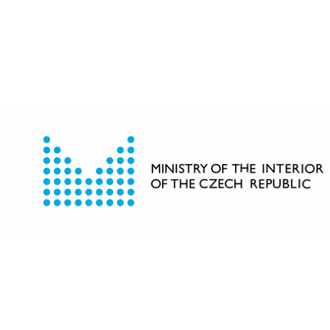
2019–2022
Project ID: VI20192022169
Grant Provider: Ministry of Interior CR
This project focused on deploying artificial intelligence technologies for the automated reception and processing of emergency calls using a voice chatbot in speech analytics, semantic analysis, dialogue management, and voice synthesis are expected, including the integration of geographical data. The output was a functional demonstrator working with real telephone calls under the condition of immediate deployment in an Integrated Rescue System (IRS) and recommendations for system integration and its further development towards IRS automation.

PRACE-6IP – Partnership for Advanced Computing in Europe, 6th Implementation Phase
2019–2022
Project ID: 823767 (H2020 INFRAEDI-2018-2020)
The project’s objective was to build on the previous successful PRACE projects, the task of which was to implement the European HPC infrastructure and to continue to develop supercomputing cooperation to strengthen the competitiveness of European science, research, and industry. Unlike the previous ones, the sixth project in a row to support the pan-European PRACE research infrastructure and its users was focused on identifying and developing new applications with significant potential to exploit the capacity of exascale supercomputers.
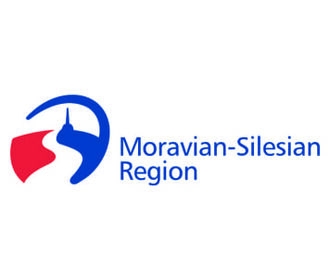
2019–2022
Project ID: 07685/2019/RRC
Grant Provider: Moravian-Silesian Region
The project aimed to support talented PhD students at VSB-TUO. The support of students was in the form of an additional payment to the regular doctoral scholarship for students. VSB-TUO, in cooperation with the Moravian-Silesian Region, contributed to better conditions for students in their scientific activities, especially concerning the use of the results of their scientific work in the application area.

Open European Quantum Key Distribution Testbed
2019–2023
Project ID: 857156 (H2020-SU-ICT-2018-2020)
The project aims to establish a testbed for a highly secure network using the principles of quantum mechanics for key distribution. It has been the most extensive implementation of QKD (Quantum Key Distribution) in Europe. The role of IT4Innovations lies primarily in three areas. The first is a real use case of HPC via QKD between IT4Innovations and PSNC (Poznan). The second is participation in the development and implementation of key management. The third is a simulation of the QKD use cases of all partners in the project and the improvement of an open/source QKD simulator, which is being developed as an open source. The computational resources of IT4Innovations are used for the simulations.

2019–2022
Project ID: CZ.02.2.69/0.0/0.0/18_058/0010212
Grant Provider: MEYS CR
The project enhanced the quality and profile of educational activities and increased their relevance to the labour market. It implemented new forms of educational methods, established new study programmes, and boosted the internationalisation of the university and ties between the university and its graduates. It implemented methods for increasing the participation of students with special needs and improving the strategy for motivating secondary school students to enrol in tertiary education studies. It enhanced not only the capacities of the management personnel of higher education institutions (HEI) but also the quality of the HEI strategy management. The project’s main objective was to increase the relevance of VSB-TUO educational activities to the needs of the labour market. In practical terms, this means reaching a state where the university’s educational activities reflect the needs and unique features of the MSR labour market and all target groups.

2019–2022
Project ID: CZ.01.1.02/0.0/0.0/17_176/0015651
Provider: The Operational Programme Enterprise and Innovation for Competitiveness
The project aimed to research and develop the digital twin product at Siemens, s.r.o. The project was divided into two parts; the first part, i.e., the research and development of the digital twin product, an asynchronous electric motor, was conducted at the Siemens branch s.r.o. Elektromotory Frenštát.

2019–2022
Project ID: TN01000013
Provider: TACR
The PerMed Centre was focused on applied research in the diagnostics and therapy of rare and genetically determined diseases. The aim was to develop personalised diagnostic methods and drugs that would help specific groups of patients. The highly interdisciplinary approach combines medicine, chemistry, biology, genetics, and bioinformatics. All research activities included molecular target validation, biological chemistry, preclinical development, biomarker identification, and DNA analyses. The results of the PerMed Center were commercialised both by licensing as well as the establishment of spin-offs.

2019–2021
Project ID: TJ02000157
Provider: TAČR
The objective of the project is to create an optimisation system and a strategy for optimising the operation of the electrical distribution system (DS). The control optimisation system will consist of a program and an interface. The program will set various DS elements to optimise the DS operation in multiple ways (i.e., operation with minimal cost, with maximum reliability, etc.). Optimal DS configuration will be achieved, for example, by changing network topology or controlling local active and reactive power sources. The interface will allow the proposed program to be included in the existing dispatching control structures of the DS. The optimisation strategy will describe all the hardware and software innovations that need to be performed to maximise the DS management capabilities.

2019–2021
Project ID: TJ02000031
Provider: TAČR
The aim of this project is the development of an online insulation diagnostics tool for high-voltage overhead powerlines with covered conductors. A contactless sensor will be designed and constructed for test operation. This sensor will be used to record partial discharge patterns inside and on the surface of a covered conductor. An algorithm for automatic detection of partial discharge patterns in acquired signals will be created. Based on the presence of the partial discharge pattern in the acquired signal, the algorithm automatically evaluates the insulation state of the covered conductor. This goal will be met by the end of the project duration.

2019–2021
Large-scale Execution for Industry & Society
Identifikátor projektu: 825532 (H2020-ICT-2018-2020)
The project's goal is to create an advanced engineering platform using modern technologies such as high-performance computing, big data, and cloud services. The benefits of the LEXIS project will be demonstrated by validating the platform in three use cases suitable for industrial sectors such as aeronautics, weather and climate, and earthquake and tsunami.

2018–2021
Identifikátor projektu: FV30104
The project objectives are as follows: 1. Development and verification of a multiphase numerical computational model utilising cavitation and free surface. 2. Experimental research of flow in the model intake and discharge objects and the creation of an experimental results database for verification of numerical computational models. 3. Utilisation of shape optimisation for the design of new pump and turbine stations, including intake and discharge objects.

2018–2021
Exascale Quantifications of Uncertainties for Technology and Science Simulation
Identifikátor projektu: 800898 (H2020-FETHPC-2016-2017)
The three-year-long project ExaQUte aims to develop new methods for solving complex engineering problems using computational simulations on exascale systems. Within the project, new computational methods and software tools for solving aerodynamic simulations to optimize geometrically complex structures will be developed. The work of IT4Innovations in the project involves collaborating in deploying Hyperloom and COMPss tools on high-performance computing systems, as well as their configuration and optimization. IT4Innovations will also be involved in testing robust algorithms for shape optimization of structures under wind loads.

Performance Optimisation and Productivity 2
2018–2022
Project ID: 824080 (H2020-INFRAEDI-2018-1)
The POP2 Centre of Excellence built on the Performance Optimisation and Productivity 1 (POP1) project and extended its activities. The main aim of POP2 was to assist with the analysis of parallel applications, identify erroneous parts of codes, and make recommendations of optimisation methods, resulting in increased performance and better scalability of a given application.

2018–2020
Project ID: 21820033
Superheroes 4 Science project plans to introduce the young generations to High-performance computing (HPC), a critical field of technology that utilises supercomputers to solve complex problems and perform computationally intensive tasks. The project aims to create various interactive educational materials on HPC and its two related emerging fields: Artificial Intelligence and Quantum Computing. The project is co-financed by the Governments of Czechia, Hungary, Poland and Slovakia through Visegrad Grants from International Visegrad Fund. The mission of the fund is to advance ideas for sustainable regional cooperation in Central Europe.

2017–2022
Project ID: CZ.02.2.69/0.0/0.0/16_018/0002713
Provider: Operational Programme Research, Development and Education
The main objective of the project was the establishment of a Doctoral School for Education in Mathematical Methods and Tools in HPC, integrating doctoral studies at Charles University (Faculty of Mathematics and Physics), the Czech Academy of Sciences (Institute of Mathematics), and VSB-TUO and building on their broader research cooperation. Part of the project was the modernisation and internationalisation of one of the doctoral programmes of the Doctoral School (Computational Sciences, VSB-TUO) and the creation of a new double-degree programme in collaboration with Université Toulouse III Paul Sabatier in France. → www.mathinhpc.cz

2017–2022
Project ID: EF16_013/0001791
Provider: Operational Programme Research, Development, and Education
The objective of the project was, among others, to extend IT4Innovations in-house research in the three following fields: 1) Modelling of photonic and spin-photonic structures, design of novel progressive materials based on electronic structure calculations, and bioimage analysis using HPC. In-house research is an essential source of HPC expertise for IT4Innovations, reflected in the infrastructure’s services to its users. 2) Use of approximations involving many-body effects (MB) in electrons. Further, it was the inclusion of temperature effects in computational methods, particularly anharmonic lattice vibration effects, and thus the possibility to study materials in near-realistic conditions. Finally, it was the possibility and access to study phenomena at the mesoscale level, i.e., those including tens of thousands to millions of atoms, such as the effect of interfaces, dislocations, and other defects on material properties, as they exist in natural materials and often limit their use. 3) Creating a globally unique platform for analysing biological and biomedical image data using the open-source FIJI platform’s high-performance computing (HPC) infrastructure.

2017–2022
Project ID: CZ.02. 1. 01/0. 0/0.0/15_003/0000466
Provider: Operational Programme Research, Development, and Education
The project yielded significant measures for developing informatics, robotics, and cybernetics research at the Czech Technical University in Prague. The project established a new AI and Reasoning research group within a given part of the Czech Institute of Informatics, Robotics, and Cybernetics (CIIRC), which focused on solving advanced interdisciplinary problems of high technical and social priority. The project was also supported by national partners (VSB-TUO and the University of West Bohemia in Pilsen). The motivation for their participation stems from the emphasis not only on the concentration and integration of resources and sharing of knowledge and infrastructure but also on establishing a “unified space for opportunities” for young talents in the Czech Republic.
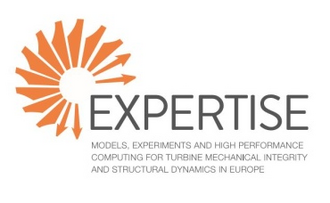
2017–2021
EXperiments and high PERformance computing for Turbine mechanical Integrity and Structural dynamics in Europe
Project ID: (H2020-MSCA-ITN-2016 call)
The objective of this project is to educate researchers able to participate in interdisciplinary cooperation in the areas of supercomputing and mechanics. The colaboration between industrial partners and research organizations will speed up development of the key technologies in turbomachinery and their rapid commissioning in practice. The project is supported by Marie Skłodowska-Curie Innovative Training Networks grant within Horizon 2020.
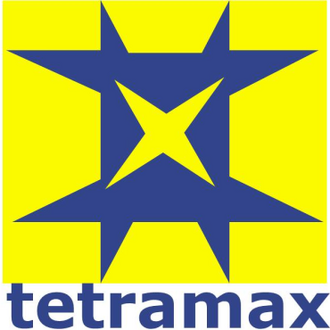
2017–2021
Technology transfer via multinational application experiments
Project ID: 761349 (H2020-ICT-2016-2 call)
The objective of this project was to implement the European "Smart Anything Everywhere" initiative in the field of Customized Low Energy Computing for cyber-physical systems and the Internet of Things. The essential purpose of this initiative is to accelerate innovations in European industry. The initiative connects technical and application know-how, which helps small and medium-sized enterprises adopt advanced digital technologies more effectively and efficiently.
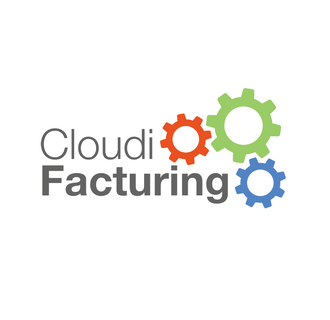
2017–2021
Cloudification of Production Engineering for Predictive Digital Manufacturing
Project ID: 768892 (H2020-FOF-2017 call)
The project's mission was to contribute to efficient use of high performance computing by European small and medium-sized production companies and thus increase their competitiveness. This project aims at the optimization of production processes and productivity of companies using HPC-based modelling and simulation, as well as cloud services.

